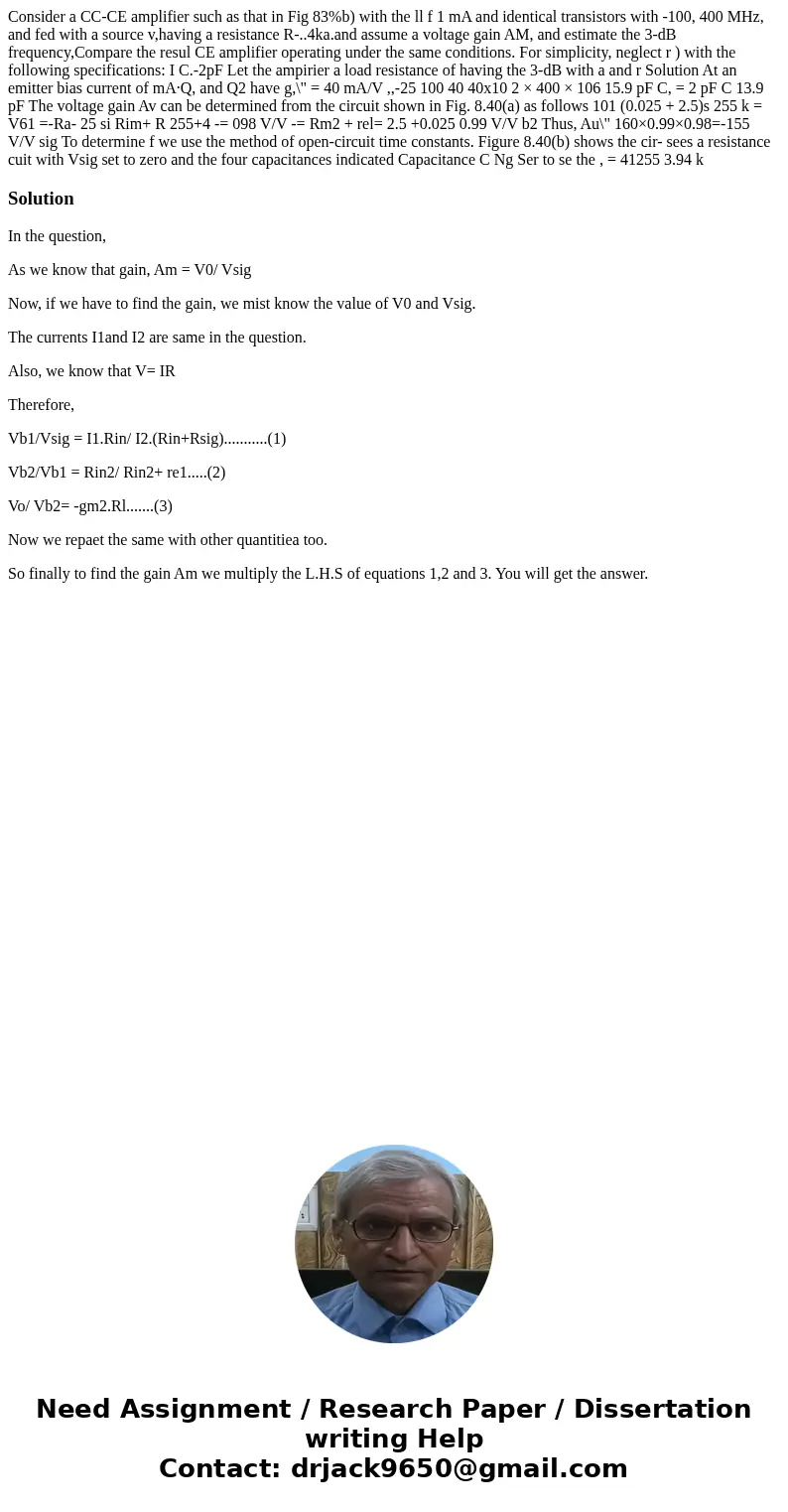Consider a CCCE amplifier such as that in Fig 83b with the l
Consider a CC-CE amplifier such as that in Fig 83%b) with the ll f 1 mA and identical transistors with -100, 400 MHz, and fed with a source v,having a resistance R-..4ka.and assume a voltage gain AM, and estimate the 3-dB frequency,Compare the resul CE amplifier operating under the same conditions. For simplicity, neglect r ) with the following specifications: I C.-2pF Let the ampirier a load resistance of having the 3-dB with a and r Solution At an emitter bias current of mA·Q, and Q2 have g,\" = 40 mA/V ,,-25 100 40 40x10 2 × 400 × 106 15.9 pF C, = 2 pF C 13.9 pF The voltage gain Av can be determined from the circuit shown in Fig. 8.40(a) as follows 101 (0.025 + 2.5)s 255 k = V61 =-Ra- 25 si Rim+ R 255+4 -= 098 V/V -= Rm2 + rel= 2.5 +0.025 0.99 V/V b2 Thus, Au\" 160×0.99×0.98=-155 V/V sig To determine f we use the method of open-circuit time constants. Figure 8.40(b) shows the cir- sees a resistance cuit with Vsig set to zero and the four capacitances indicated Capacitance C Ng Ser to se the , = 41255 3.94 k 
Solution
In the question,
As we know that gain, Am = V0/ Vsig
Now, if we have to find the gain, we mist know the value of V0 and Vsig.
The currents I1and I2 are same in the question.
Also, we know that V= IR
Therefore,
Vb1/Vsig = I1.Rin/ I2.(Rin+Rsig)...........(1)
Vb2/Vb1 = Rin2/ Rin2+ re1.....(2)
Vo/ Vb2= -gm2.Rl.......(3)
Now we repaet the same with other quantitiea too.
So finally to find the gain Am we multiply the L.H.S of equations 1,2 and 3. You will get the answer.

 Homework Sourse
Homework Sourse